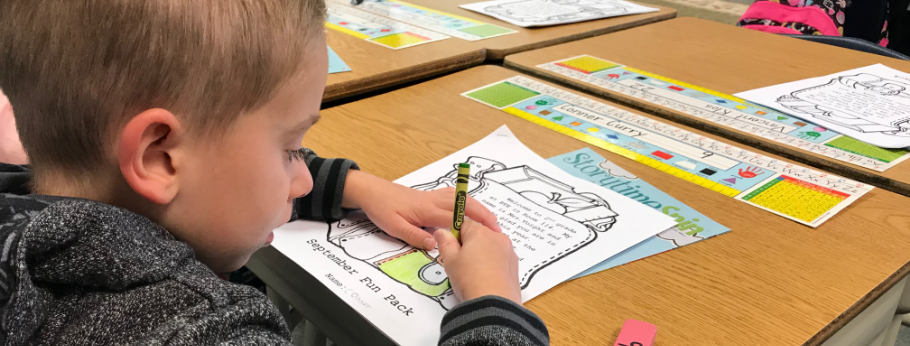Bond FAQ’s
Bond- Frequently Asked Questions
For the past year, the school board has solicited input and feedback from a variety of sources to determine the best way to address facility needs for our students. Information was gathered through several sources:
o A Facilities Planning Committee was formed in the fall of 2023 to review facilities and provide feedback on needs and priorities.
o At the recommendation of the Facilities Planning Committee, two separate groups were then formed: a Bond Planning Task Force and a Long Range Facility Planning group.
o The Bond Planning Task Force met throughout the spring of 2023 and presented their recommendation to the board on August 10, 2023.
o The community was invited to attend the August 31st and September 14th meetings to provide input regarding the BPTF’s recommendation.A Bond is a long-term investment that allows school districts to purchase property for schools, construct new schools, or modernize existing schools. Bonds are sold to investors who are repaid with interest over time from property tax collections, generally between 12-20 years. The interest is an estimate created by financial advisors/underwriters, built using conservative projections.
Similar to a mortgage or home loan, the lending institution is paid back with interest.Bonds are for Buildings- A capital projects bond offers districts funds for major construction upfront and represents a long-term commitment from voters to support the improvement or new construction of district facilities. Once bonds are approved and subsequently offered for sale to investors, tax revenue is collected over a 20-year period to pay off the bonds.
Levies are for Learning- Maintenance and operations levies collect funds that help finance educational programs and operations of the public school district. The levy specifies an amount to be collected each year and runs for a period of 1-4 years. The EP&O levy provides support for programs, staffing, and services that the state does not fully fund.Heating and ventilation systems were installed at Fisher Elementary and Lynden Middle School when they were built. However, with warmer temperatures happening more often throughout the year, those systems are not having enough of an impact on the second floor of those buildings. Students in both buildings are being severely impacted by the lack of temperature control. Temperatures up to 90 degrees were reported on the second floor of these buildings. This is not conducive to student learning.
Previous bond initiatives that were on the ballot in February of 2014 and 2011 included information that the old LMS building, or land, would be sold. Those bond initiatives did not pass.
The April 2015 bond initiative included plans to convert the old middle school site into a community learning center that would include the district offices, early learning classrooms, and areas for community recreation and education. It also included that Judson Hall and the gymnasiums would continue to be used for district drama productions, practices, and games.
That bond did pass, and we have converted the old middle school into what is now known as the Main Street Campus which houses our pre-school, district offices, and other district-wide learning programs and support. As planned, the Glenning Street property and surplus property behind the former school were sold. Proceeds were used to remodel the Main Street Campus to allow for its current uses.No. This is a common misconception. Lynden Middle School is not at capacity, nor is it projected to be at capacity anytime soon. Fisher Elementary School is near capacity as a result of boundary revisions completed prior to the 2021/2022 school year.
These two projects came in under budget during bid and design stage which resulted in the addition of permanent classroom space. This common misunderstanding stems from the way the state’s assistance program works. The 20% support funds contributed by the state is only calculated based on enrollment of anticipated year of opening. Communities that support projects beyond current enrollment would pay 20% more for that square footage as a result of this process. So, it can be built bigger than needed but costs would be higher so districts have to put out projects they think the community will pass.The August 2024 Capital Facility Bond is $157,500,000. Proceeds from the sale of the bonds will fund the following projects:
o Construct and equip a new Lynden High School to address enrollment growth, safety, aging facilities, and purpose-built environments.
o Addition of permanent early learning and special education classrooms to Isom and Vossbeck Elementary Schools to support enrollment growth and meet the special needs of learners.
o Undertake safety and playground enhancements at district facilities serving early learning, special education, and parent partnership programs.
o Upgrade HVAC systems throughout the district to extend life and improve air quality.The total amount of the bond if $157.5 million. Taxes are collected annually from property owners to make the debt payments over the next 21 years. The district does assume a 5% to 6% annual increase to property values within its 21-year debt repayment structure which results in escalation of the total annual amount collected by the district. Collection would begin in 2025. Each year, the County Assessor’s Office calculates a millage rate (tax rate) which is used to determine how much each property owner will pay. If this capital bond were to pass, we are estimating it would add $1.36 per $1,000 of the total assessed value to a property owner’s taxes in 2025. The debt repayment tax rate estimate of $1.36 per $1,000 includes estimated interest and fees associated with the sale of the bonds. This would increase the total combined voter-approved tax rate (school levy, LMS/Fisher bond) to an estimated $3.76 per $1000 in 2025. The complete projected tax rate analysis provided to the board prior to passing its resolution in April 2024 can be viewed here.
If you own property, you can calculate your estimated tax increase by using the formula:
Total Assessed Value / $1,000 x $1.36= Estimated Annual Tax IncreaseWe are committed to maintaining our facility investments. We prioritize remodeling or renovating buildings whenever possible to ensure our school buildings meet the needs of our students. As part of the facility planning process, a cost projection analysis was done to look at the cost of renovating and the cost of rebuilding.
The major issues that need to be addressed with the current high school are the obsolete internal building systems, over-capacity classrooms and common spaces, outdated learning spaces, and multiple exterior doors. Additionally, the existing gym and locker rooms need to be renovated and traffic safety needs to be addressed throughout the site.
Costs
While the option to renovate the existing building systems (plumbing, HVAC, electrical) and add the additional learning space may seem to come in at lower initial construction cost, these renovations come with several added obstacles and costs that when taken into consideration actually cost more with an inferior outcome.
Alternatively, for a new facility, the bulk of construction would take place on the practice fields while students remain in their classrooms. Upon completion students are moved into the new space and the existing building is then demolished and administrative spaces built. This not only brings minimal disruptions to students but reduces the costs for portables that would be necessary in a plan for renovation. While some portables might need to be used, it would be far fewer than the number needed for a renovation and would be in use for less time.
Additionally, the cost of securing the required portables to house nearly every classroom while renovation is taking place would cost a significant amount. The average cost of a portable is $500,000. For 30 classrooms, that means an additional $15 million in costs. Alternatively, for a new facility, the bulk of construction would take place on the practice fields while students remain in their classrooms. Upon completion students are moved into the new space and the existing building is then demolished and administrative spaces built. This not only brings minimal disruptions to students but reduces the costs for portables that would be necessary in a plan for renovation. While some portables might need to be used, it would be far fewer than the number needed for a renovation and would be in use for less time.
Hazardous materials
Asbestos abatement would be necessary while renovating existing building systems. Control and disposal of hazardous materials like asbestos adds a significant cost to the construction that is not fully determinable until the work is underway.
When demolishing existing structures, the removal of the materials is still necessary, but costs can be planned for ahead of time, and are significantly less than prevention and control.
Additional Obstacles to Remodeling
o The safety concerns regarding the 70+ exterior doors will not be addressed, nor would the safety and proximity to the street.
o Renovations will not be able to adequately address the modernized classrooms for updated Career and Technical Education classes or add the collaborative learning spaces.
o The construction time for a phased renovation is longer. The price escalation of renovations would continue to increase with inflation.
o A renovated Lynden High School will continue to have higher maintenance and operational costs than a new building.
The facility needs are not temporary, and in fact, will continue to get worse as enrollment is projected to increase. The cost to address these issues will only continue to rise. This is the most cost-effective time to address the safety and capacity issues at the high school.Lynden High School has served our students and community well over the past 40+ years. But 40+ years of wear and tear takes a toll on a facility, especially when there are more students in a space that it was designed for, as is the case at LHS. Our maintenance and custodial staff have worked hard to maintain a clean, safe, and quality learning environment, but building systems are past their usable life. Outdated electrical and plumbing systems are failing and requiring continual replacement of pipes, outlets, and fixtures. Some outdated systems also make it a challenge to find replacement parts, which results in the need to fabricate parts or make a repair that is not specific to a particular system, which takes considerable time and money.
During the 2022/2023 school year, the Facilities Planning Committee reviewed each schools’ facility. The committee’s job was to review the condition of each school and make recommendations about short term and long term maintenance. The overwhelming response was that Lynden High School needed to be replaced.
Additionally, in 2022, the school district conducted a formal study and survey, evaluating each school facility, using state standards to determine the conditions of all components of each facility. Each facility was rated on a 1-100 scale and Lynden High School scored at or below the 50 point mark. A score of 60 is considered to be a recommendation to replace rather than remodel.– Growth is predicted to increase by 14% across the entire district adding more than 450 students by the 2030/2031 school year.
– Bernice Vossbeck and Isom Elementary Schools are currently at and over capacity, and will need to house 169 more students by the 2030/2031 school year.
– Lynden High School was designed to accommodate 740 students. There are currently 890 students enrolled, with a projected enrollment of 925 by the 2029/2030 school year.
At this time, we do not have enough classrooms for all of the students who attend Lynden High School or Bernice Vossbeck Elementary. We currently have enough classrooms at Isom Elementary. However, at all three schools, the common spaces such as the cafeteria, gym, hallways, bathrooms, counseling office, occupational therapists, psychologist’s office, and meeting & planning spaces have not been adjusted to meet the additional demand.Cost estimate used for Lynden High School provided space to serve 1200 students. Upgrades to Bernice Vossbeck and Isom Elementary Schools will increase their capacity to 540 students each.
The facility design and development process begins after a bond is passed. However, our plan is to create a school that supports modern learning. It is our responsibility as a school district to make sure schools have the tools necessary to provide students with the skills to be successful. Designing and adding purpose-built learning spaces increases connection, enriches our current programs, and would provide students with college and career-ready skills for success after graduation.
o LHS will have improved safety and security as the old design did not take this into account.
o The school design will include modern teaching elements such as break out space for teaming and collaboration.
o The school design will incorporate space for students to receive learning in small groups rather than working in hallways or in the back of classrooms where multiple distractions occur.
o The new school would provide appropriate spaces and equipment for Career & Technical Education (CTE) programs. Exposing students to high-demand trades and the skills required for the jobs of today and those we don’t even know exist yet.
o The new school will have sufficient electrical capacity to utilize modern technology for learning.
o The new school will incorporate natural lighting which research identifies as a significant support for learning.
o The new school will include the addition of a performing arts center and upgrades to athletic facilities.The longer we wait, the more expensive each project becomes. Meanwhile, the schools that are overcrowded are more heavily used, accelerating the wear and tear on the facilities that were built for a smaller student population.
Starting the projects now locks in today’s lower costs, reducing the likelihood of additional necessary building repairs. While taking on one project at a time might seem like an easer choice in the near term, it will end up costing the community more in the long run.Community involvement is a priority for the district. Two committees of staff, parents, and community members studied our facilities over two years and developed the recommended list of projects to be funded by a bond.
Once funding is in place, community members and school staff will be charged with planning and providing input to the design of the project. This includes the use of construction materials, architectural features, educational program specifications, and community priorities.
Community members will also be invited to join an oversight committee to ensure fiscal responsibility and district spending of bond funds.Yes. This bond does not address the needs of Lynden Academy. We are currently leasing the space for Lynden Academy located at 1986 Main Street which will expire in 2029. The site has capacity for approximately 300 students, and there is a waitlist for students who are wanting to enroll in the program. Existing building capacity limits the number of students who can access the program. Leading up to 2029, the Long Range Facilities Plan recommends that the board look into future possibilities of securing a long-term lease or consider purchasing this property. Future renovation and expansion possibilities should be investigated to better facilitate and expand the Lynden Academy program.
The tax rate is adjusted each year by the Assessor’s Office to ensure we don’t collect more money than approved by voters. A recent example is the 2015 Fisher/LMS bond. The tax rate for that bond was estimated at $1.39 per $1,000 in 2016 and is now set by the County Assessor for 2023 at $.60 per $1,000. If your home’s value in 2016 was $400,000 your annual tax would have been $556 $$400,000/1,000 x $1.39); that same home is likely closer to $850,000 in 2023 resulting in a $510 annual tax ($850,000/1,000 x $0.60). The school district does assume a 5% to 6% annual increase to property values within its 21-year debt repayment structure which results in escalation of the total annual amount collected by the district.
Also, an individual’s annual property taxes supporting school bonds and levies go up or down based on changes to their assessed value in relation to the total assessed value of all taxpayers within the district. If your property value increases by 20% from one year to the next but the total assessed value of all properties increases by 23%, your slice of the pie (total amount collected by the school district) would be reduced. Additional industrial & commercial properties, and housing developments, increases the total assessed value of properties within the taxing district.The state provides matching funds in the form of construction assistance dollars for qualified construction projects, depending on the condition of the facility and only if the community approves the bond. In addition to the $157,500,000 dollars in local bond, the Lynden School District is eligible to receive $20 million dollars from the state.
A ballot including the Lynden School District August 6, 2024 Capital Projects Bond election will be mailed to the homes of registered voters on or around July 17, 2024.
Washington State Law has two requirements for school bond elections:
1. Capital projects bond measure require a supermajority vote; that means that at least 60% of the votes must be “YES” in order for the measure to pass.
2. At least 40% of the voters who voted in the last general election must cast a ballot for the August 6th election in order for the capital facility bond to be validated.Senior citizens (age 62+) and disabled individuals may be eligible for a residential property tax exemption. Call the Whatcom County Assessor’s Office at 360-676-6790 for more information on this exemption.


